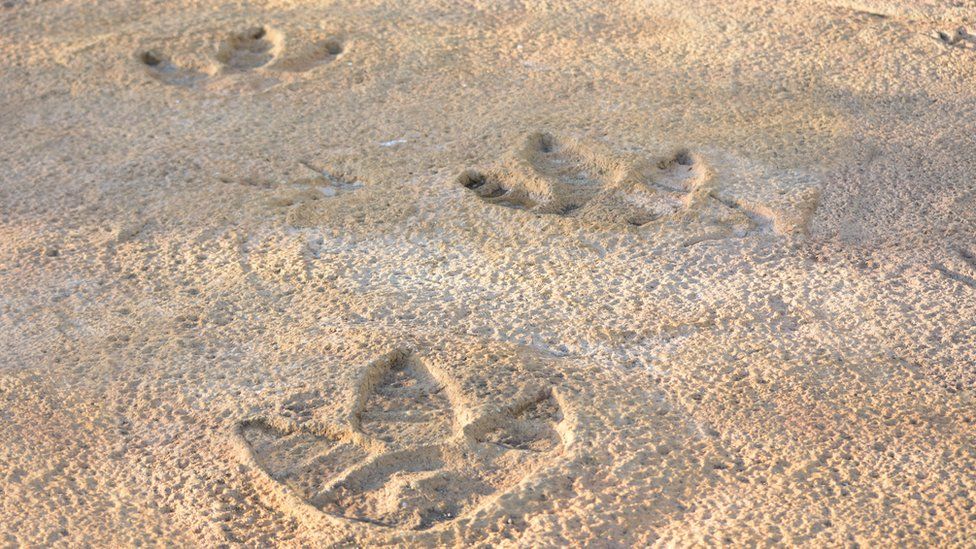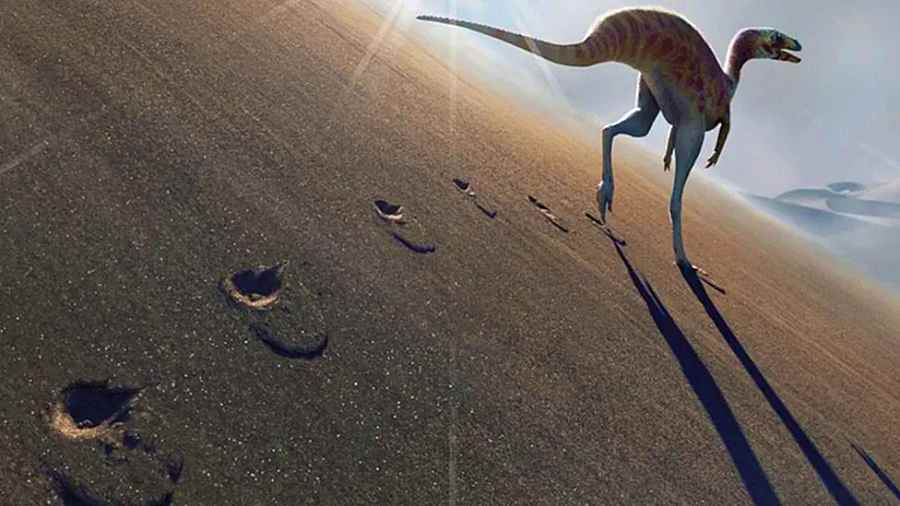Sat 25 October 2023:
On Thursday, Brazil’s geological department reported the discovery of a new species of dinosaur, a speedy animal that lived in the desert during the early Cretaceous period.
According to the researchers, the new species, Farlowichnus rapidus, was a small carnivorous animal approximately the size of a modern-day seriema bird, or about 60-90 cm (2-3 feet) tall. Cretaceous Research, a scientific journal, published the discovery.
“From the large distance between the footprints found, it is possible to deduce that it was a very fast reptile that ran across the ancient dunes,” the geological service said in a statement.
The early Cretaceous period stretched from 100 to 145 million years ago.

The geological service, in its official statement, highlighted the significance of the large distance between the footprints as evidence of the dinosaur’s extraordinary speed. The findings have been documented and peer-reviewed, with the research paper published in the prestigious scientific journal Cretaceous Research.
Rafael Costa, a palaeontologist at Brazil’s Museum of Earth Sciences (MCTer), emphasised the uniqueness of Farlowichnus rapidus. The discovery challenges existing knowledge about dinosaur species that once inhabited the region, providing a valuable addition to the understanding of the early Cretaceous period’s ecosystems.
The discovery of Farlowichnus rapidus is a significant milestone in paleontological research, bringing to light a new chapter in the evolutionary history of dinosaurs. The discovery not only enhances our understanding of ancient desert ecosystems but also underscores the importance of continuous exploration and analysis of fossil records.
The fossilized dinosaur “trackways,” as scientists call them, were first found in the 1980s by Italian priest and paleontologist Giuseppe Leonardi in what today is the city of Araraquara, in Sao Paulo state.
Leonardi donated one of the footprint samples, found in the so-called Botucatu formation, a group of rocks formed by an ancient dune desert, to Brazil’s Museum of Earth Sciences (MCTer) in 1984.
The footprints are different from all other known dinosaur footprints, said MCTer paleontologist Rafael Costa.
SOURCE: INDEPENDENT PRESS AND NEWS AGENCIES
______________________________________________________________
FOLLOW INDEPENDENT PRESS:
WhatsApp CHANNEL
https://whatsapp.com/channel/0029VaAtNxX8fewmiFmN7N22
![]()
TWITTER (CLICK HERE)
https://twitter.com/IpIndependent
FACEBOOK (CLICK HERE)
https://web.facebook.com/ipindependent
Think your friends would be interested? Share this story!





